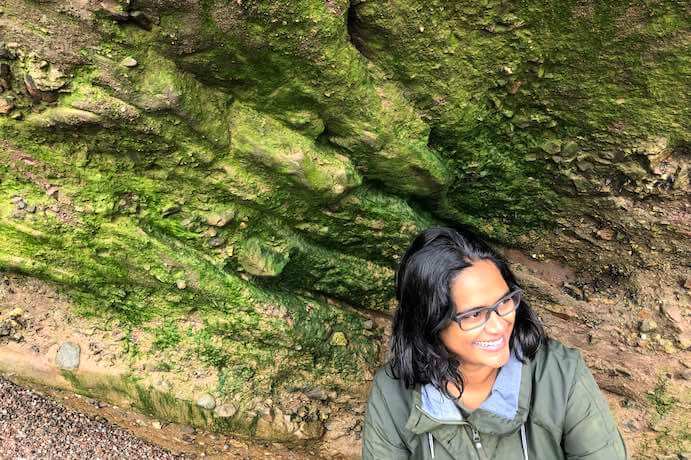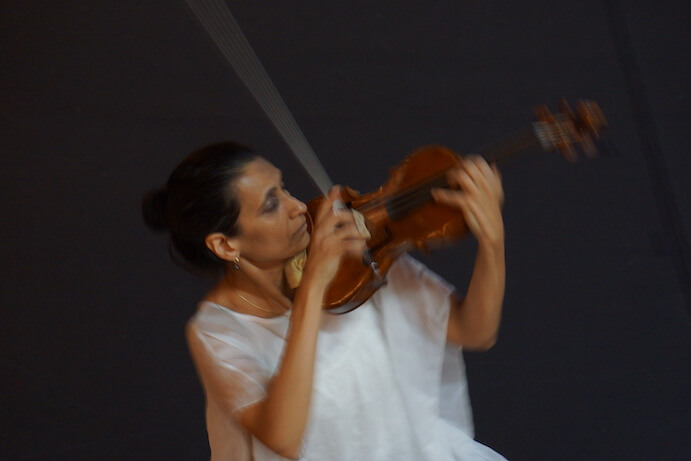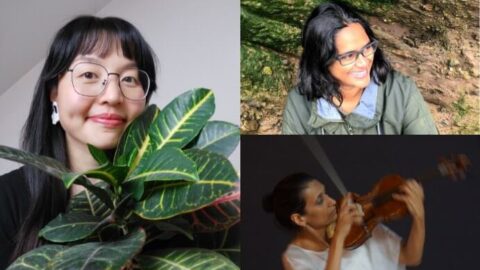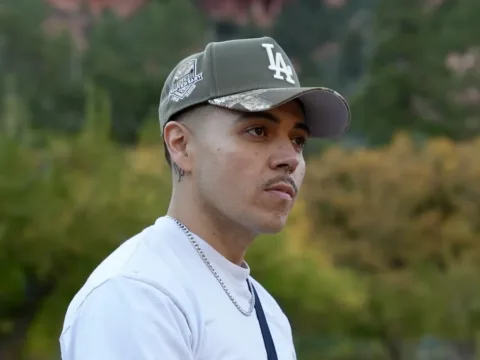Understory is the new monthly series of virtual improvisatory collaborations curated by trumpet player and composer Nicole Rampersaud; violinist, ethnomusicologist and composer Parmela Attariwala; and percussionist and composer Germaine Liu. The project explores the potential of the ‘virtual performance’ paradigm as a new form of improvisational exchange through a cumulative process of layering. One performer initiates, recording their element, and the others follow, adding their contributions in successive layers that are eventually reconciled in post-production. All performers involved have to sign off before the final product can be offered publicly. The participants are selected for their agility in the art of improvisational exchange as well as intentionally representing an array of disparate aesthetic perspectives. Using technology to build a fertile creative community within Canada, Understory challenges older forms of artistic exchange by envisioning new forms of collaboration.
Understory’s inaugural performance premiered on July 15, 2021, and subsequent events will take place every third Thursday of the month until January 2022. The next show takes place on August 19th and features Louise Campbell, Germaine Liu, Arthur Bull, Mira Martin-Gray, Ellen Waterman, and Mei Han.
What are each of your backgrounds in terms of improvisational performance and composition?
Germaine: My improvisational/compositional practices are synonymously intertwined. The origin of these practices for me came from the teachings of Jesse Stewart and Ellen Waterman. Through touch exchange, I enjoy exploring the physical potential inherent in the drum set and found objects to welcome sonic possibilities. I have been fortunate to participate in collective improvisation, too.
Nicole: While my path to improvisation and composition stemmed from Jazz studies, I have been able to carve a path that intersects with a broad range of musical practices and communities through improvisation. Music has always been a means to connect with people, and improvisation allows me to work with a wide range of artists across genres and practices. My composition practice is primarily focused on creating frameworks that showcase the artistry of the people with whom I am fortunate to collaborate.
Parmela: Because the violin is usually taught didactically and is associated with traditions for which faithful recreation of pre-existing music is paramount, neither improvisation nor composition were ever part of my formal training. Rather, I’ve continually been put in situations where I had to create, arrange, or improvise. As a teenager, I played with Sikh temple musicians; later, with Hindustani musicians (particularly tabla players), and then with dancers from multiple traditions. I also played contemporary music from a young age; so “extended techniques” have long been part of my aurality. For me, improvisation has been about finding ways to transcend boundaries of genre and discipline in order to work with artists who push my creative horizons. Cultivating connections across these boundaries has been a personal guiding principle in Understory.

How do Understory’s featured artists bridge the gaps between their aesthetic stylings without compromising their own unique approaches to improvising?
Germaine: I believe Understory artists bridge aesthetics through listening. Improvisation inherently asks for compromise, which does not necessarily put one’s uniqueness “on-the-line.” It’s a negotiation, a friendly exchange welcoming differences and similarities, coming together to encourage transformation and change through collective experience. The recording process allows each artist the platform to share their improvising approach while understanding their interdependence with all participants in their group. In post-production, participants have the opportunity to negotiate their aesthetics and work with our production team to review mixes, voice their interests, concerns, questions, and joys.
Nicole: The three of us were very intentional with who we invited to participate in our inaugural season. In addition to including artists from a broad range of practices, it was important that whoever we invited was open to exploring the balance between their respective practice and humbly collaborating with artists from other backgrounds.
Parmela: It’s about finding that liminal space and calling upon the depths of our individual artistry to find and build something that will always be greater than the sum of individual parts. Metaphorically, the first layer of the process is each artist’s offering. The second and third layers respond to the question of “How do I draw upon my individual skills and creativity to enhance this and to be in community with it?” It’s an artistic situation that reflects the reality of life in the Canadian polity.
[Tweet “[Improvisation is] a negotiation, a friendly exchange welcoming differences and similarities, coming together to encourage transformation and change through collective experience.”]
How does Understory’s virtual approach dissolve the “us” and “them” mentality around improvisation?
Germaine: To facilitate our efforts in dissolving “us” and “them,” we ask, “Who could also be an improviser?” The virtual approach allows us to invite collaborators from different parts of Canada (while being mindful of carbon footprint), from various communities and artistic circles to gather in the Understory space. We welcome collaborators that practice, make, think, and imagine in multi-modalities. Many of these collaborators did not know each other beforehand. Forming new relationships through brand new collaborations allows existing local artist circles to expand, reach further, and break smaller bubbles to form new, bigger ones (to be stretched, broken, and morphed in the future). The virtual space allows connections regardless of travel limitations and in-person requirements. Gathering virtually is real-life, where real people are behind real screens, connecting in real, emotional, embodied ways to one another.
Nicole: Understory’s approach places the process of co-creating pieces at the forefront. Each artist in a group has the opportunity to be the first person to start a piece, as well as the opportunity to be the second and final layer in the recording process. Working within this structure emphasizes the importance of finding points of commonality, so that the relationships move away from “us vs. them,” and more towards a collective.
Parmela: When I toured with Carla Bley in 1998, I had no idea that what I was doing (what her band did) had a name, aesthetic, and history. I had been engaged in the same kind of playing for years, but across genres and disciplines that weren’t part of the creative music-making community. So, I have always felt that this tradition — for all of its intention to be inclusive — had developed exclusionary practices. Understory is meant to disrupt this in two ways: first, by inviting an array of artists from different aesthetic practices; and second, by reimagining organizational structure such that each season is led and curated by a different (new) group of artists.

What specifically about the virtual medium changes the collaborative process, as opposed to an in-person performance?
Nicole: The online format for collaboration affords the opportunity to reflect and engage in discussions that don’t tend to happen in a real-time, in-person performance. It also creates a level playing field where each participant has equal agency over the process and outcome of their respective pieces.
Parmela: The physical energy emanating from other performers and the audience may be absent in the virtual space. But this energy can have detrimental effects, such as when one performer’s energy (or a disrespectful audience) smothers the agency or spirit of a co-performer. Virtual collaboration allows for both improvisatory and compositional abilities; it also demands that reflection and negotiation occur synchronously (rather than reflection after the gig, and negotiation — negotiation which is only ever performative — during the gig). Moreover, we have deliberately asked participants to bring empathy and care for their collaborators, themselves and the production team to the process.
Germaine: In-the-moment performance and artifact-making are different collaborative processes. I see the resonances of these differently. In-person performance within a time frame is ephemeral. As Nicole mentions, discussions of what we just made often don’t happen afterwards within in-person performance settings. The resonance of this experience sometimes, for me, cuts short, and feels product-oriented. The Understory virtual medium allows for a deep focus on the process of collective making where interesting questions, challenges, and concerns arise amongst all collaborators. We have to come face-to-face with one another and speak our truths: where we are at; how we feel; and what something means to us personally. The resonance that comes from this transformative process stays with me, in my whole body. It has revealed to me that our collective artistic processes are absolutely inseparable from our everyday lives, the world around us, and how all of these intersect with one another.

What are the limitations of a strictly virtual improvisational process as it intersects with available technologies?
Nicole: I tend to eschew any perspective that promotes a mindset of scarcity. The limitations come when you try to use another format to replicate another. Understory was never intended to replicate a live experience. Rather, our intent has been to explore new pathways for connection and collaboration.
Parmela: A better question is: What are the opportunities a virtual process engenders? (I have deliberately omitted the word “improvisational” because Understory builds upon improvisational impulses, which become compositional in the layering phases of the process.) Using contemporary technology allows us to circumvent the geographical distances that keep Canadian artists from not only working together, but from knowing about each other. It allows artists of different disciplines to create together (and we’ve barely tapped that possibility!). More importantly, Understory can bring overlapping aesthetics, as well as critical conversations into dialogue.
Germaine: Working virtually allows us to have the agency to set-up our spaces as we like, drinking from our favourite cups, sitting in our favourite spots. There are limitations of in-person performance spaces like room structure, lighting, stage, audience seating, staircases, ramps, doorways, ventilation, travel time, packing equipment, and being emotionally, physically, and mentally available to show-up in specific ways, within a specific time-frame. If approached with care, empathy, and openness, virtual spaces can be an important step away from unchallenged and unquestioned physical in-person spaces where we may have even reluctantly consented to participate in, even though we may have been uncomfortable or harmed in those spaces before. This is an opportunity to use our imaginations, create new systems, and to reflect on in-person spaces by asking who these spaces are for and how can we continue to work towards changing and opening spaces for everyone as we invent new ways of coming together: virtually, in-person, or combined.
I CARE IF YOU LISTEN is an editorially-independent program of the American Composers Forum, funded with generous donor and institutional support. Opinions expressed are solely those of the author and may not represent the views of ICIYL or ACF.
A gift to ACF helps support the work of ICIYL. For more on ACF, visit the “At ACF” section or composersforum.org.
























